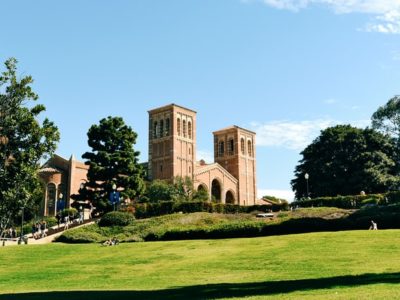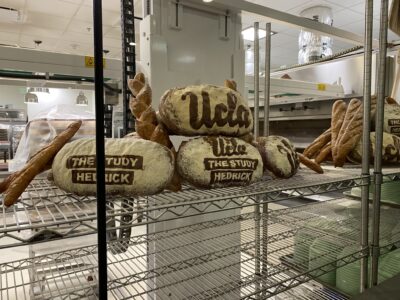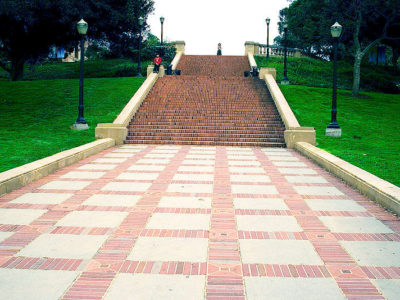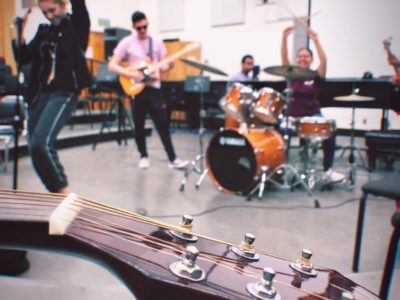With a campus the size of some small towns, UCLA could find itself with thousands of pounds of landfill garbage each day. Yet, the campus remains super eco-friendly! Thanks in part to a large staff on campus that works daily to keep the campus clean, along with many facilities applying alternatives to disposable items. But what can you do to help out these amazing people?
Read along to hear about the top 10 ways UCLA became more eco-friendly over the years.
10. Read those Eco Friendly Reminders in the Dorm Bathrooms

In the bathrooms of the UCLA dorms, students see many reminders on ways to stay eco-friendly posted on the walls. For example, some signs remind students to shut off the tap when they brush their teeth, others explain the importance of unplugging devices when not in use. Small things like this may not seem to affect the environment very much, but when over 10,000 students all actively participate in saving energy, positive impacts on the environment become visible.
9. Use the Recycling and Composting Trash Cans Throughout Campus
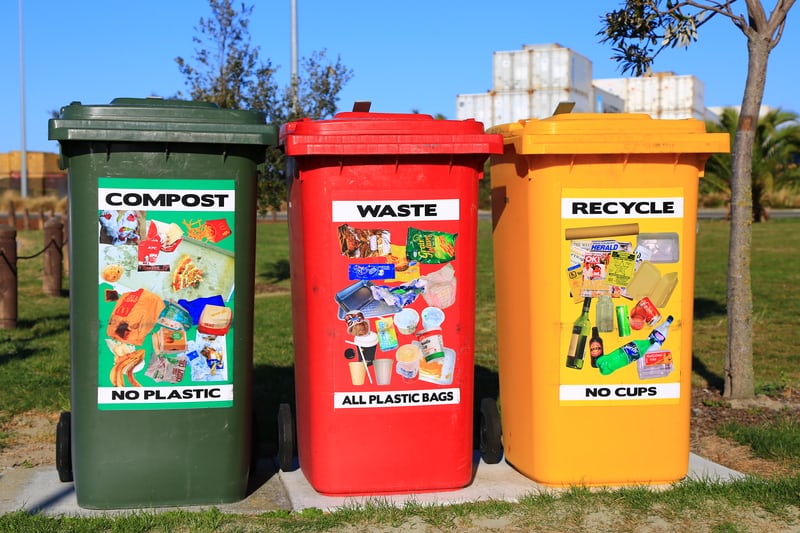
Out of the many eco-friendly policies at UCLA, arguably one of the most valuable ones has been the use of multiple trash cans. Throughout UCLA, you will find sets of three trash cans in a row instead of the standard one bin. The cans have each been painted a different color with labeling to distinguish between ‘compost,’ ‘recycling’ or ‘landfill.’ The cans even depict examples of what types of trash correspond to each can, so students can easily figure out where to dispose of their trash.
8. Easy to Read Labeling of Recyclable and Compostable Trash
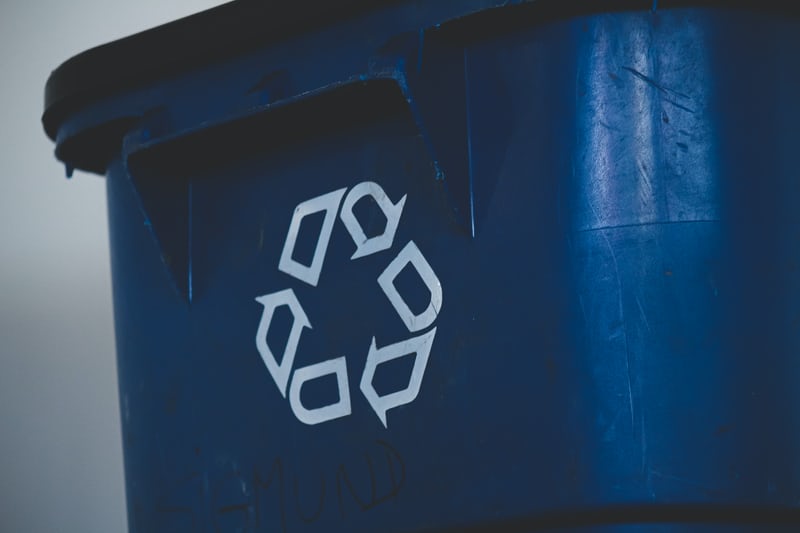
When ordering food from a UCLA dining hall or restaurant, much of the dishes given out come with labels to indicate recyclables. This way, students easily understand where to throw away their trash, so no recyclable goods go to waste in the landfill bins. It is important to label recyclables, so you can maximize the amount of trash disposed of properly. This idea even extends into the surrounding neighborhoods, likely a result of local legislation.
7. Participate in Vegan and Vegetarian Options at Every Dining Hall
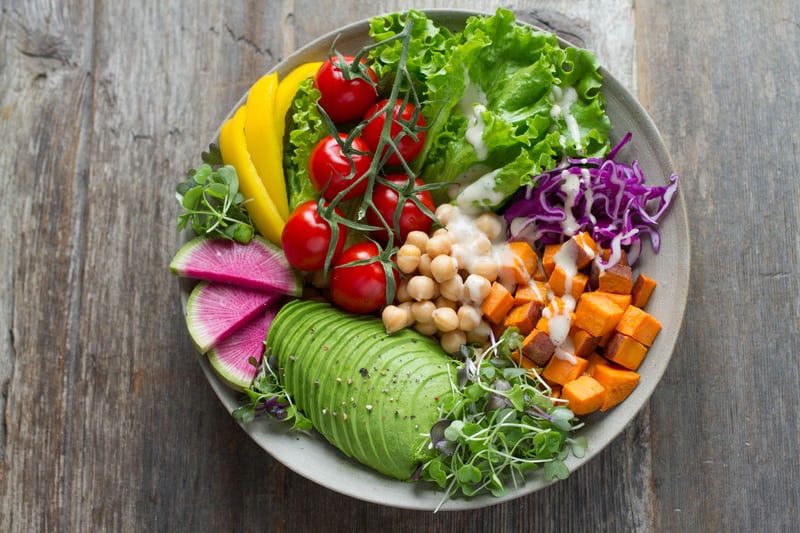
Of the many dining halls near the dorms that students can choose from, all of them provide vegetarian or vegan options. The restaurants specifically label vegan or vegetarian menu items. Additionally, the labels remain consistent throughout all the dining halls, making them easy to understand.
“There are more vegan options and in front of The Study, for example, they have a poster showing the negative effects on the environment of different types of meat,” UCLA sophomore Sara Chalhoub said.
Some dining halls label all of the different animal products, like cheese or turkey, with its level of environmental impact. This way, students take the environment into account when choosing which meat or dairy product to consume. Choosing a different type of meat or dairy product on a burrito allows a student to reduce their carbon footprint.
6. Enjoy Takeout Dinners with Compostable Boxes, Silverware and Cups
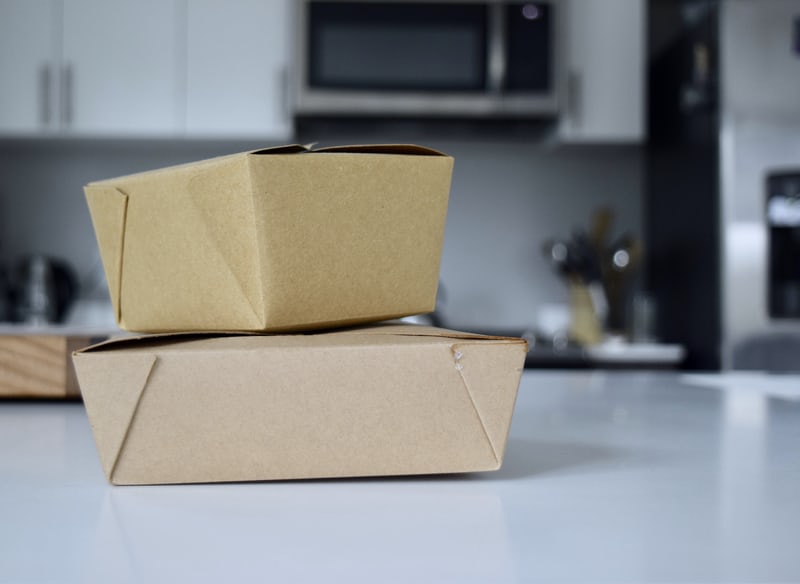
Due to the nationwide staffing shortage, many of the dining halls also currently lack enough staff to work perfectly. To accommodate many students, the dining halls began providing take-out meals to expedite mealtime. The school also recruited food trucks from the surrounding areas to feed UCLA students. Nevertheless, the amount of landfill trash did not change much because UCLA provides students with compostable boxes, silverware and cups when they order take out.
“They have been using compostable items for food, and they have a compost and recycling not just trash,” UCLA freshman Katie Bare said.
A few issues arise when it comes to using compostable dishes. The material must still hold its shape and remain durable. UCLA’s compostable dishes achieve just this, being perfect for everyday use. The best part? The straws aren’t made of cardboard, but they’re still compostable.
5. Walkable City/School

UCLA, located in the neighborhood of Westwood in Northwest Los Angeles, got built with walkability in mind. When walking throughout campus, you will only see a few skateboards or scooters throughout campus. The school sits on large hills with many staircases leading to different buildings, so its nearly faster to walk to class than to bike, considering you would need to walk your bike up the stairs. The neighborhood of Westwood itself remains easily accessible, with automatic crosswalk signals at nearly every turn. Also, storefronts were built angled toward the sidewalks, visible from the walkways instead of the road.
4. Join UCLA’s Sustainability Clubs
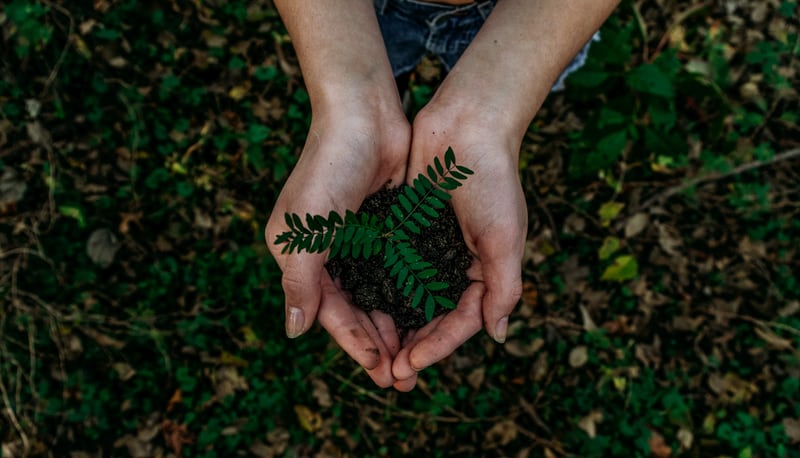
UCLA houses many sustainability clubs who work to keep the environment surrounding UCLA protected. Some groups focus on vegan or vegetarian diets, some work on the importance of clean power or simply focus on keeping the school clean of litter. Plus, if you volunteered in your high school’s sustainability clubs, UCLA’s clubs might just seem like (a green) home.
“In my high school, my friends started a veggie club which promoted healthier and vegan and vegetarian friendly options in the dining hall,” UCLA freshman Xitlali Zúñiga-Gross said. “They also worked to source local foods and streamline the composting system.”
These clubs do everything from picking up trash on campus to advocating for social justice. Many dedicated clubs work tirelessly to make the community of UCLA a better place, their work does not go unnoticed. These clubs benefit the entire community, from Westwood to the UCLA campus.
3. Help the Protected Land

Thanks to the Westwood Homeowners Association, a chunk of the original landscape of UCLA, Sage Hill, remains protected. Students can visit the hill to find many native flora or fauna, growing the same way they would thousands of years ago. Many local groups work to protect more the land, since UCLA got built on the land of the Tongva people years before Europeans colonized what became Los Angeles. Protecting the land, specifically land with indigenous plants, not only reduces the carbon footprint of the land compared to if a building or parking lot was built, but also aids in teaching UCLA students about the land they live on.
2. Thrift Stores

Many thrift stores exist throughout Los Angeles, a few of which reside only a mile or two from UCLA’s campus. Thrifting reduces your impact on the environment while saving a bit of money. Also, thrift stores allow you to donate your clothes to give back to the community. It allows an item destined for the landfill to get another life. The item gets used for many more years, in the same way that recycling a water bottle allows for many more uses.
1. Take Public Transportation When You Need To
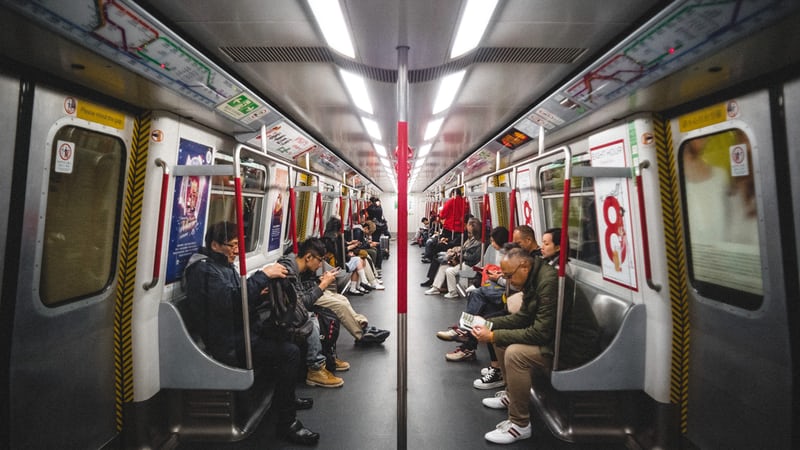
Looking to go outside of Westwood? Multiple bus stops right off campus can take you all the way to downtown Los Angeles or even the Santa Monica Pier. The buses cost around $1.50 each way, but some even give free rides to students if you prove that you go to school at UCLA. Many electric scooters around campus are available for use for a small fee. Additionally, Uber or Lift provide rides at all times of day. Such rideshare options help reduce the local traffic, and thus the local carbon emissions of the city. In a large metropolis like Los Angeles, the number of cars on the road directly correlates to its environmental impact. These options help to alleviate the overall environmental impact of the city.
Just approve these edits and this is good to go. Going forward, please try to not repeat yourself and be sure to avoid passive. You want to speak to the reader as if they’re a good friend

